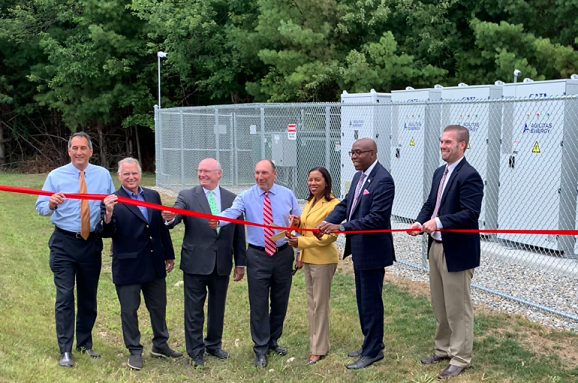
McKee signed the 2024 Energy Storage System Act earlier this week (26 June), which aims to create frameworks and tariff structures to incentivise the deployment of energy storage, including state-led procurements.
The Act, Senate Bill 2499 and House Bill 7811, also sets goals for the in-state deployment of 90MW of energy storage by 31 December 2026, 195MW by 31 December 2028, and 600MW by 31 December 2033. The most recent state-level storage target enacted prior to Rhode Island’s was in Michigan, which set a 2,500MW target by 2030 last year, while the US’ biggest such targets are New York’s (6GW by 2030) and Virginia’s (3,100MW by 2035).
Rhode Island policymakers, including four Democratic senators who led or sponsored the bill, recognised that energy storage could alleviate constraints on the state’s transmission and distribution (T&D) network while lowering the costs of running the electric system that ratepayers are exposed to.
However, the state currently does not have an interconnection tariff that recognises the flexibility and dispatchability of energy storage systems, and the bill ordered the regulatory Public Utilities Commission (PSC) to advance frameworks to promote grid-connected storage systems in cases where their value to ratepayers is proven.
A stakeholder-led process to create a suitable interconnection tariff framework should begin no later than 1 September 2024 and conclude by or before 1 May 2025. Distribution companies with more than 100,000 customers must then file their proposed interconnection tariffs for review.
The PSC has been ordered to conduct market reviews at intervals of no less than three years, assessing the value of energy storage and the various technology options, which would include long-duration energy storage (LDES) as well as short-duration.
While Rhode Island’s focus is on managing and upgrading the T&D network at the lowest cost through energy storage, integrating growing shares of renewable energy will also be a priority.
Late last year the state opened a request for proposals (RFP) for up to 1,200MW of offshore wind energy, along with a joint procurement being held with nearby Connecticut and Massachusetts to collectively acquire 6,800MW of offshore wind capacity.
USDA loan for utility in Alaska city with place in battery storage history
Meanwhile, on the same day Rhode Island Governor Daniel McKee signed the legislation, utility Golden Valley Electric Association (GVEA) in Alaska announced the award of federal funding for a large-scale battery energy storage system (BESS) project.
The US Department of Rural Affairs (USDA) agreed to loan US$100 million to the utility, to be used to build the 46MW/92MWh BESS which would connect to an existing GVEA substation.
A share of funds will also go towards enhancing another substation to enable the grid interconnection of 16MW of solar PV capacity serving a utility power purchase agreement (PPA) and build a half-mile long distribution network circuit to connect the new solar PV plant to the substation.
The BESS would be small by comparison to even the average projects in leading markets such as California and Texas which are routinely exceeding 100MW maximum output.
It would also be just short of being Alaska’s largest such project to date though, a few megawatts and megawatt-hours smaller than cooperative Homer Electric Association’s 46.5MW/93MWh Tesla Megapack system at the site of the electricity supplier’s Soldotna power station inaugurated in 2022.
However, GVEA and the Fairbanks region of Alaska where the utility serves its approximately 100,000 customers, represents a slice of energy storage history.
In 2003, Fairbanks became home to the then-largest stationary BESS project in the world, a 25MW, 15-minute duration nickel-cadmium cell installation, which was later expanded and even entered the Guinness Book of Records in 2005 at its 45MWp sizing.
According to local news outlet Newscenter Fairbanks, that project is still in operation but close to reaching the end of its life, with a GVEA representative stating the utility had not decided whether or not to upgrade it.
The USDA loan is coming from the department’s Powering Affordable Clean Energy (PACE) scheme, to which GVEA made an application for funding last year. According to Newscenter Fairbanks, around 80% of the loan will go to the BESS project and 20% for the network upgrades to accommodate the solar PV plant.
GVEA has also been granted loan forgiveness for US$60 million of the total sum due to the involvement of a local company, Doyon Ltd, which is the regional Alaska Native corporation for Interior Alaska, while the BESS project could also qualify for tax credits worth 30% to 50% of capital cost of investment.

